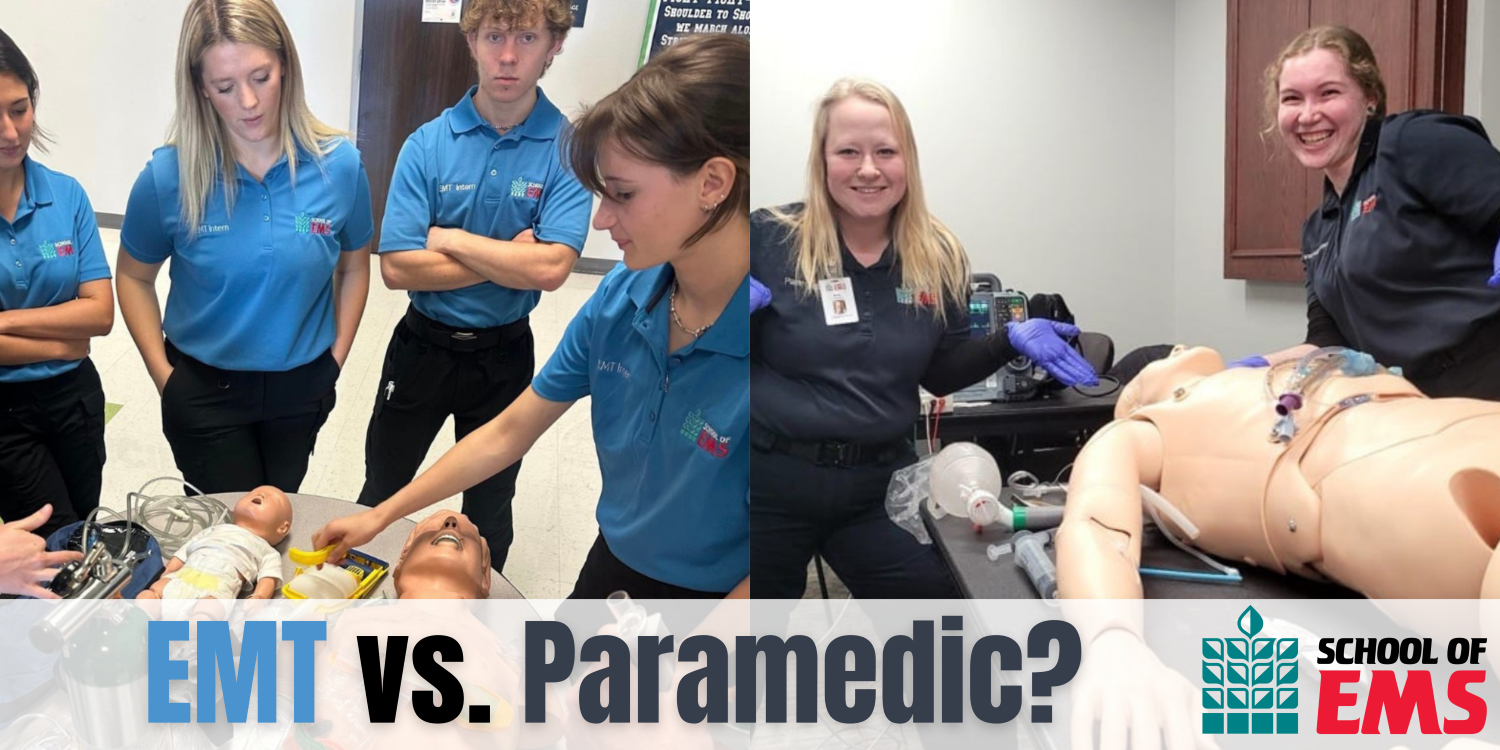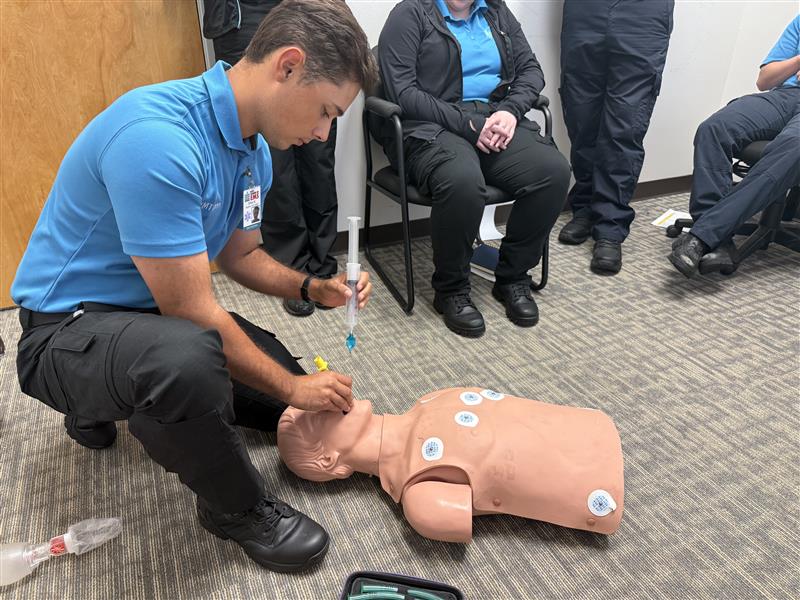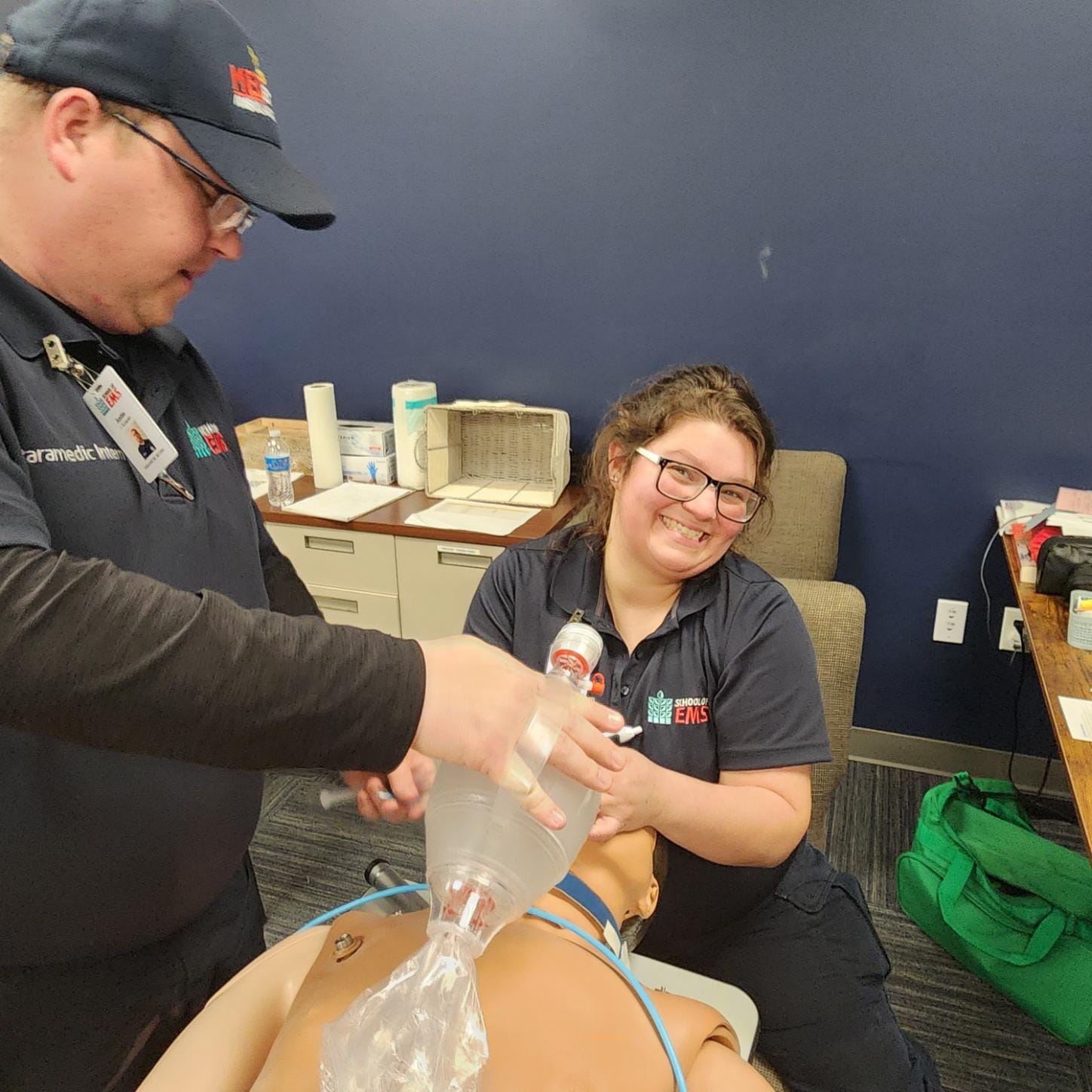EMT vs. Paramedic: What's the Difference?
– By #School of EMS

At the School of EMS, we understand the importance of clarity when choosing a career in emergency medical services. The question of EMT vs. Paramedic: What’s the Difference? is crucial for prospective students. Both roles are integral to pre-hospital care, yet they differ significantly in training, duties, and scope of practice. Our aim is to elucidate what's the difference between an EMT and a Paramedic so you can align your career aspirations with the right path. Whether you're considering the path of a Paramedic or EMT, understanding these roles will guide your decision-making process with confidence.
What is an EMT, and What Does an EMT Do?
The difference between a Paramedic and an EMT starts with their foundational roles. An Emergency Medical Technician (EMT) offers vital pre-hospital care for individuals in medical emergencies. Our EMT training programs focus on patient assessment, basic life support, and the use of emergency equipment, blending classroom learning with hands-on experience. Certification is achieved through a state-approved training program, followed by passing a national or state exam, ensuring readiness to respond effectively in emergencies.
EMTs are responsible for assessing patients, providing basic medical care, and assisting in patient transport to healthcare facilities. They perform essential procedures like CPR, wound care, and oxygen administration, working closely with paramedics to ensure timely and appropriate care.
Operating in various settings such as ambulance services, hospitals, and community health organizations, EMTs frequently work under high-pressure conditions, requiring quick thinking and decisive action. They are pivotal in the healthcare system, offering immediate assistance and stabilization before hospital arrival.

What is a Paramedic, and What Does a Paramedic Do?
Paramedics are highly trained healthcare professionals providing advanced emergency care to individuals in critical conditions. The path to becoming a paramedic involves intensive training, combining classroom instruction with clinical experience, and culminates in certification upon passing a national or state exam.
Paramedics possess advanced skills, including administering medications, intubating patients, and interpreting ECGs. These abilities enable paramedics to stabilize patients in critical conditions, delivering life-saving care during transport to medical facilities.
Working in diverse environments, paramedics are integral parts of fire departments, specialized rescue teams, and other emergency response units. Their adaptability is crucial, as they provide care in both urban and rural contexts, demonstrating the breadth of their skill set.

Key Differences Between EMTs and Paramedics
The paramedics vs EMT distinction primarily lies in the depth and duration of training. EMT training involves approximately 120 to 150 hours of coursework, typically completed in a few months, while paramedic training is more comprehensive, requiring 1,200 to 1,800 hours of instruction over a year or more.
EMTs provide basic life support services, assisting paramedics in emergencies. In contrast, paramedics have a broader scope, performing advanced procedures like intubation and medication administration. This expanded skill set equips paramedics to manage complex medical emergencies.
Salary expectations also differ, with EMTs earning around $37,000 annually, whereas paramedics can expect approximately $48,000. The job outlook is promising, with projected growth rates of 7% for EMTs and 11% for paramedics, driven by increasing demand for emergency medical services.
How Do I Become an EMT or Paramedic?
Starting your journey as a paramedic vs EMT involves dedication and rigorous training. Here's how you can begin either path:
To become an EMT, enroll in a state-approved EMT training program lasting 120 to 150 hours, covering skills like patient assessment, CPR, and emergency response protocols. After training, pass the NREMT exam and obtain state licensure, which may include additional requirements.
Aspiring paramedics should first complete an EMT program and gain field experience, then enroll in a paramedic program requiring 1,200 to 1,800 hours of training. Upon completion, pass the NREMT Paramedic exam and apply for state licensure.
Continuing education is essential for both EMTs and paramedics, enhancing your abilities and ensuring compliance with state regulations. Many employers require ongoing training to maintain licensure, making it a crucial aspect of your career.
At the School of EMS, we make the application process pain free.
Other Emergency Medical Services (EMS) Related Careers
Beyond the roles of EMT vs Paramedic, the EMS field offers various critical roles that support emergency care. First responders, including police officers and firefighters, provide initial assistance at emergency scenes until EMTs or paramedics take over.
EMS administrators oversee operations, manage personnel, and ensure compliance with regulations, focusing on budget management and training programs. These leaders ensure effective functioning of emergency medical services.
EMS careers offer diverse specializations, such as flight paramedics and critical care paramedics, each requiring additional training tailored to specific environments and patient needs. The job outlook remains strong, with growing demand for emergency medical services.
Your EMT/Paramedic Career Begins at the School of EMS!
At the School of EMS, we pride ourselves as your trusted leader in EMS training and education. Our programs equip you with essential skills, ensuring you're prepared to handle any emergency.
Our comprehensive courses cover everything from basic life support to advanced cardiac care, tailored to meet certification requirements. Whether you're starting as an EMT or advancing to a paramedic, the School of EMS is your key to a successful and fulfilling career.
Explore our programs today and take the first step towards making a difference in your community.
Apply now and join the ranks of those dedicated to saving lives!
Last Modified:
